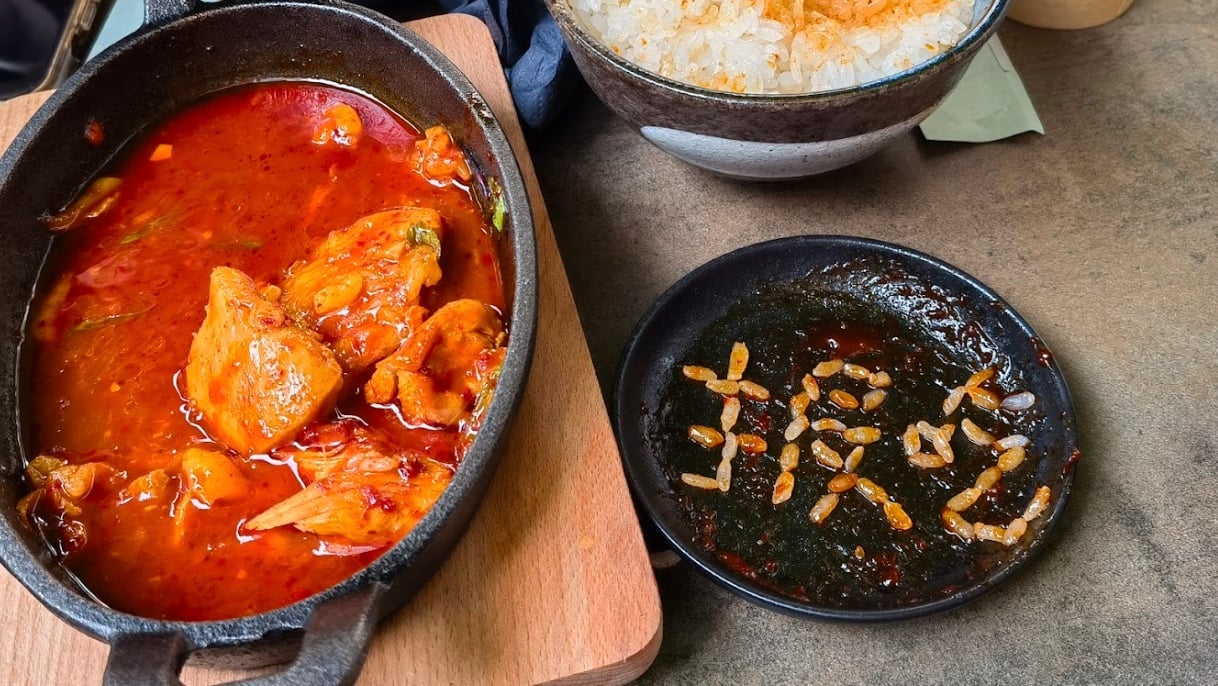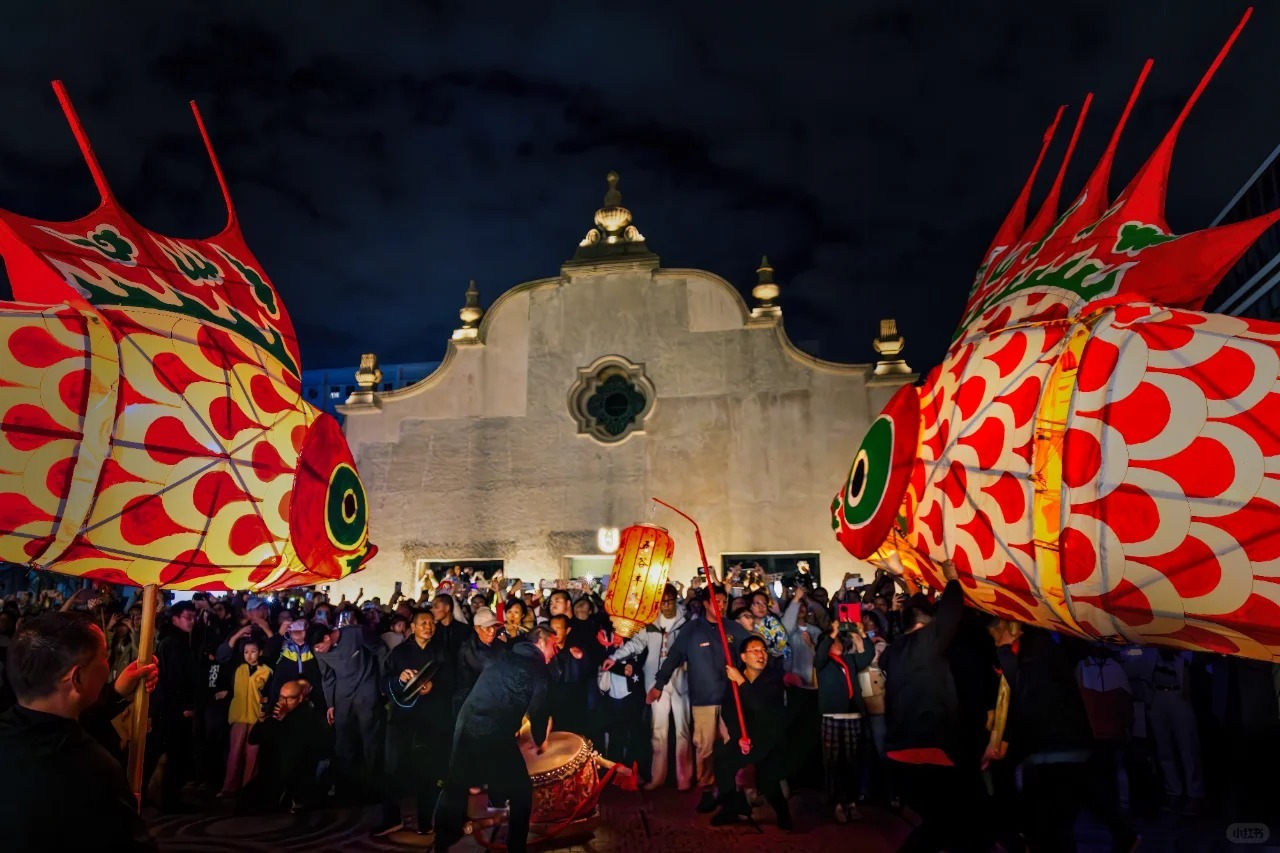It’s lunchtime in Nairobi, Kenya, and among the street stalls and strip mall eateries sits the source of some of the city’s most interesting culinary cross-pollination: Nairobi’s Chinatowns.
Nairobi is home to an increasing number of Chinese immigrants, and with them, a number of Chinatowns — three in total — have cropped up across the city since the 1980s. Each of these Chinatowns features a distinct dish that melds traditional Chinese cuisines with Kenyan touches.

Intestine noodles at Q-two Chongqing Noodles, Nairobi (see below)
From dumplings to bubble tea with an East African twist, here are some of the Sino-Kenyan creations that have emerged from these communities.
Bubble Up Economy
China is number-one in global tea production, and responsible for 23 percent of worldwide tea exports. Its traditional milk tea market is expected to reach 77.9 billion USD by 2021. (The global tea industry, by comparison, will barely reach 73 billion USD by 2024.) As the industry diversifies, changing consumer tastes have led to a decreasing demand for traditional tea.
9,000 miles away, Kenya’s tea industry faces problems of its own. The nation stands at number-two in global tea exports, generating more than 1.3 billion USD yearly, and employing an estimated 10% of Kenya’s population. But overproduction and corruption have driven the returns on farming the crop down dramatically.
At one shop in Nairobi’s Kilimani district, Zantea co-founder David Muratha and his team are taking a note from Chinese bubble tea stands that are adding value to a traditional drink.
Related:
 Would You Drink Boba Tea With Cough Syrup?A spoonful of sugar makes the medicine go down.Article Dec 21, 2018
Would You Drink Boba Tea With Cough Syrup?A spoonful of sugar makes the medicine go down.Article Dec 21, 2018
Bubble tea originated in Taiwan, before exploding in popularity across Asia and the East Asian diaspora. Usually a fusion tea blend mixed with milk, tapioca pearls, fruit, and even cheese, these drinks can sell for up to 36RMB (6USD) at mainland China’s hottest tea stand, HeyTea.
Muratha was introduced to bubble tea as an engineering student in northeastern China. But it wasn’t until after graduating and returning to his native Kenya that he connected with his Chinese business partner, Zhang Wei, and launched Zantea.
Muratha finds that Kenyan customers tend to prefer fresh flavors and drinks made with black tea, whereas Chinese customers like their drinks sweeter and are partial to green tea-infused selections. This may have something to do with the teas each region is most famous for; China is known for its high-grade green, yellow and white teas, while the Kenyan market specializes in black tea. In order to meet demand on both sides, Zantea sources varieties from both countries.

To get a better idea of some of the creative Kenyan touches that Zantea adds to its bubble tea, we need look no further than their Avocado-Honeydew drink.
This beverage melds Kenya’s knack for growing some of the world’s best avocados with fresh milk, cream and honeydew. According to Trey Hunt, a former Beijinger living in Nairobi, the mild flavor of the avocado pairs perfectly with the overall sweetness of the drink.
But Zantea isn’t just stopping at milk and fruit teas. The team is working with local farms and Chinese partners to develop a new dried Kenyan tea brand it hopes to sell in Kenya, China and the rest of the world. It’s a lofty goal, but a well-timed one: just last year the Chinese government expressed a commitment to purchase more goods from Kenya. And according to Kantar Worldpanel, fusion teas from countries outside of China are seeing an increased demand among China’s youth.
Last year, HeyTea reported revenues upwards of 60 million USD. Here’s hoping bubble tea’s future in Kenya — and Kenyan tea’s future in China — will be equally as sweet.
Watch the full video on Zantea below:
Dumpling Don of Kilimani
Sukuma wiki (meaning “to stretch throughout the week” in Swahili) is a hardy green vegetable popular throughout East Africa, known for its long shelf-life and high nutrient value. Sukuma is most often consumed with ugali — a stiff corn porridge — but at Jasper Dumplings in Kilimani’s Chinatown, the staple vegetable has taken on a new life.
This eatery makes the only sukuma egg dumplings in town — a play on the traditional green vegetable-and-egg filling found at many dumpling shops around China.
Jasper Dumplings’ owner, who emigrated from China’s Hubei province, sees a lot of similarities between sukuma and vegetables like chives (jiucai 韭菜) typically eaten as dumpling fillings within China. She says:
“In Chinese we call sukuma, ‘African spinach.’” The flavor reminds me of a vegetable we used to eat when I was young.”
The dumplings may be her invention, but it’s up to her all-Kenyan staff to prepare them to the customer’s satisfaction. Any connoisseur knows that the hardest part of making these tasty classics is the folding process — one dropped fold can have the entire filling spilling out in the boil. When asked about the difficult task of mastering dumpling folding, a staff member shrugged: “It was hard in the beginning, but we are used to it now.”

The owners kindly whip up two plates of dumplings made to order. The slightly bitter flavor of the sukuma mingled well with the vinegar, soy sauce, and Jasper’s homemade chili oil (made from Kenyan chilis, naturally). But Jasper’s sukuma dumplings are not only filling — they’re a precursor to ties forming between China and Kenya’s agricultural sectors.
In 2018, the Chinese General Administration of Customs and Kenya’s Ministry of Agriculture, Livestock and Fisheries agreed to collaborate closely to increase Kenya’s agricultural exports to China, in exchange for capacity building in the agricultural sector. In September, Kenya became the first African nation to export avocados to China.
Until Kenya and China are able to forge stronger ties in the agricultural sector, it’ll be up to Jasper Dumplings to facilitate cross-cultural culinary connections.
Watch the full video on Jasper Dumplings below:
Authentic Intestines
Tucked away beside a Chinese grocery, Q-two Chongqing Noodles serves up feichang mian (肥肠面), or intestine noodles to hungry customers. This dish, while altogether Chinese, is well-received among Kenyan customers for its use of a classic meat product that transcends classes.
Intestines are eaten throughout different regions of China, but are an especially popular ingredient in Sichuan. The food’s popularity in Sichuan may not only be because of the many methods used to prepare the dish, but also because of intestines’ role in traditional Chinese medicine (TCM) as a food that moistens dryness, reinforces deficiency, and stops thirst and bleeding.
In Sichuanese cuisine, feichang mian is made by adding well-cleaned intestines to broth of hot water, ginger, spring onion, and cooking wine. The intestines are then fried in oil, and boiled together with a combination of spices and pastes for an hour to form the base of the soup. After the flavors meld sufficiently, they are then added to a bowl of freshly boiled noodles.

The owner of Q-two Chongqing Noodles says that while most people outside of China are turned off by eating intestines, Kenyan people are quite receptive. Here, intestines are eaten “almost equally among income segments,” according to Kenya Market Trends. One of the nation’s most popular intestine dishes is matumbo, a mix of cow stomach and intestines boiled with herbs, then fried with oil, onions, tomatoes and spices.
Our Beijinger-turned-Nairobian friend Hunt weighs in on the noodles’ authenticity: “In China, this is a dish I would eat religiously. The taste is like some of the most authentic restaurants that I have [eaten at] in China.”
Though customers can happily enjoy feichang mian in Nairobi, it is becoming increasingly difficult to do so in China. A catastrophic swine fever epidemic has decimated the country’s pig population, which may lose 200 million pigs by the end of this year. This has led to an undersupply of pork, and rising prices for pork products on the market.
Related:
 Mission Impossible Burger: Can China Go Beyond Meat Once More?Can a new generation of homegrown plant-based substitutes convert China to flexitarianism?Article Nov 21, 2019
Mission Impossible Burger: Can China Go Beyond Meat Once More?Can a new generation of homegrown plant-based substitutes convert China to flexitarianism?Article Nov 21, 2019
In light of this, perhaps the next evolution in Sichuanese cuisine could take place here in one of Nairobi’s Chinatowns.
Watch the full video on Q-two Chongqing Noodles below:
All images: Alexandria S. Williams



















